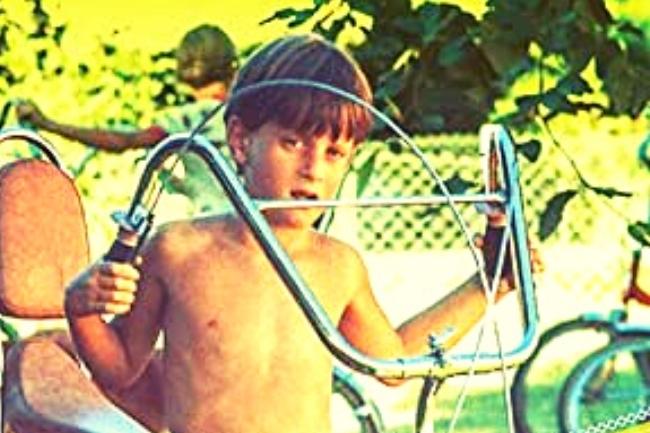Boom Kids: Growing Up in the Calgary Suburbs/ 1950–1970 | James A. Onusco

Detalhe de capa de Boom Kids: Growing Up in the Calgary Suburbs/ 1950–1970
Since their conception, scholars have treated suburbs as a sociological petri dish, a delineated space in which to examine an evolving landscape and the social dynamics within its borders. Almost every field of history has a stake in the suburban narra-tive, producing diverse work interrogating gender and sexuality, evolutions in tran-sit, housing, and consumerism, the politics of city planning and local governance, impacts on health and the environment, and the intertwined notions of conformity, gatekeepers, and outsiders. The history of childhood has often travelled to the sub-urbs. This is most apparent in studies of North America’s postwar suburbs, when parents were increasingly outnumbered by their baby boom offspring and a child-hood focused on academics, safety, and character building was championed. James Onusko’s Boom Kids: Growing Up in the Calgary Suburbs, 1950–1970 contributes to this discourse by shifting the oft dominant central Canada-focus of both childhood and suburban history to the prairies. Onusko recounts the history of Calgary’s Banff Trail suburb from the vantage point of its youngest residents to demonstrate “both consciously and unconsciously [how] children and adolescents influenced suburbia, just as it shaped them” (2).
Boom Kids opens with a tour of Banff Trail, described as a twenty minute bike ride from Calgary’s downtown. Modest bungalows, often owner-built, began ap-pearing on residential lots in the early 1950s. Not long after, curvilinear street de-signs replaced the traditional gridiron, allowing for more parks, central schools, planned leisure spaces, and less heavy traffic flow. A small commercial village al-lowed residents to meet their basic shopping and hospitality needs without having to go into the city. Onusko’s eighteen oral history participants describe how they inhabited and traversed these spaces. While memories of bedrooms and rec rooms are included, outdoor spaces dominate. It is not revelatory to recognize that chil-dren’s free time in this era was spent — usually unsupervised — playing in streets, backyards, parks, creeks, and snowbanks. What stands out is the local specificity of the participants’ memories. For instance, by 1960, the suburb’s eastern border reached the University of Calgary campus, described by one participant as “very modern and futuristic” (38). Older kids ran amuck on the publicly accessible cam-pus grounds and had fun playing in the elevators. In the north, only a barb wired fence separated suburb from farmland. To some, the rural outskirts were a slice of wilderness and wildlife amid blocks of tamed nature. For others, working as a farm-hand was a reliable summer job.
Banff Trail attracted predominantly white, Canadian-born, English-speaking homeowners from working-class and middle-class families. This appears to be the makeup of Onusko’s interviewees too. When asked about diversity in their neigh-bourhood, they recalled only a handful of Chinese Canadian or Black classmates, and often not until they reached high school. Catholic neighbours were also identi-fied as a minority. Despite living on Treaty 7 territory, Indigenous people appear to be mainly visible at the Calgary Stampede, which Onusko acknowledges made them — to the white suburban children — part of “a pageant, a past, not a present” (73). One participant recalled being taught about racism and tolerance in school, but given the whiteness of their community, he perceived the lessons as “very textbook-like because we didn’t have any real-life examples” (77). While Onusko frames an entire chapter around the “diversity deficit” of Banff Trail’s population, there are missed opportunities to make Banff Trail’s whiteness a recurring frame of analysis beyond demographics (70). Notably in the chapter on play, Onusko could reflect on Alberta’s history of colonialism when highlighting the popularity of “Cowboy and Indian” roleplay and Western-themed radio and TV shows. A welcome addition to the text would be a reflection on whose voices might be dominant or invisible in his evidence, be in oral history interviews, archived material, or the excerpts from Banff Trail’s high school yearbooks and student newspapers.
Boom Kids covers a lot of familiar territory. This is not a criticism, but an observa-tion that anxieties about delinquency, polio, teen pregnancy, and the Cold War per-colated in Banff Trail, just as they did in suburbs outside of Toronto or Montreal. So too did Beatlemania, saddle shoes, and uniformed youth groups like Cadets and Girl Guides. This speaks to national and transnational networks circulating discourses about youth and common youth cultures. Boom Kids does more than document re-curring trends in a prairie context. It offers an innovative approach to examining the history of childhood and youth that can be extended beyond studies of the suburbs or the baby boom era. In the chapter entitled “Things that Go Bump in the Night,” Onusko considers how children and teens are so often at the mercy of a clock, with curfews and bedtime representing micro and macro surveillance once darkness falls. And yet many of Onusko’s participants reveal an alternative read on nighttime, how “under the cover of darkness” youth at home or going out can “escape piercing adult gazes” and perhaps even partake in a “transfer of power after nightfall,” which offers opportunities for liberation and risk (150). Often as historians, we are preoccupied with long constructs of time, thinking in seasons, years, and centuries. Onusko re-minds us of the importance of slowing down to think of subtle changes throughout a day and how the variable of age might impact people’s experiences and perceptions of time and light.
Resenhista
Tarah Brookfield – Wilfrid Laurier University.
Referências desta resenha
ONUSCO, James A..Boom Kids: Growing Up in the Calgary Suburbs, 1950–1970. Waterloo: Wilfrid Laurier University Press, 2021. 260p. Resenha de: BROOKFIELD, Tarah. Historical Studies in Education / Revue d’histoire de l’éducation. Vancouver, Vancouver, v.31, n.1, 2022. Acessar publicação original.

